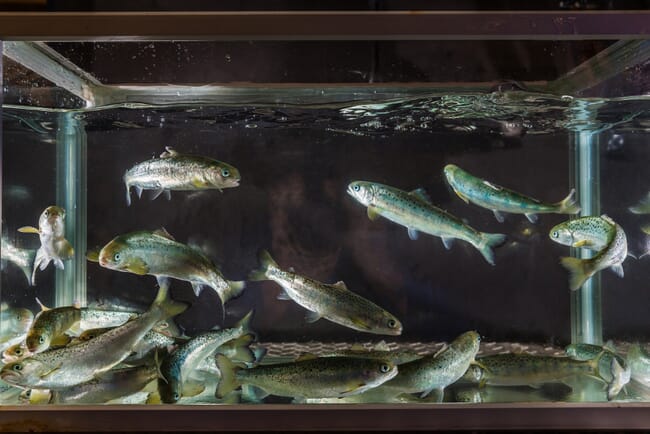
© Terje Aamodt, Nofima
So concluded a group of researchers from Nofima, who investigated the biological consequences of 45 days of continuous ozonation on Atlantic salmon post-smolts in a brackish water RAS.
Why use ozone?
Ozone (O3) is highly regarded in aquaculture because of its disinfection properties and the ability to improve water quality, thereby creating an optimal environment for growth, survival, and performance of cultured species. Because of its high oxidative potential, some of the pollutants and metabolic by-products accumulating within low and near-zero exchange systems are oxidised; hence, rendering them less harmful for the cultured fish and making the rearing environment more favourable.
Potential pitfalls
However, the researchers note that toxicity issues in such systems remain a serious concern, as excess ozone can cause significant harm or even mass mortality to cultured fish.
The trial
During the trial each of the six tanks used in the experiment was stocked with 250 smolts with an average starting weight of 98.1 ± 0.4 g (mean ± standard deviation, SD). The smolts were allowed to acclimatise for three weeks before the ozonation - which ran for 45 days - commenced.
The tanks were divided into two recirculation systems. One of these, consisting of three tanks, received continuous ozonation with the oxidation–reduction potential (ORP) value of 334±22 mV throughout the trial. Meanwhile for the three control tanks, which were part of a different recirculation system, the mean ORP value was 282 ± 13 mV.
Results
Their results showed no significant difference in survival, operational welfare indicators and average weight at termination between the ozone-treated and control groups. Moreover, quantitative histopathology disclosed that the ozone group exhibited a better gill health status than the control group, particularly at the end of the trial.
“The treatment did not result in metabolomic dysregulation and overall profile lent support to the transcriptomic data that temporal effects had a greater influence on the changes observed. Exposure to handling-confinement stress revealed that ozone treatment did not alter the ability of post-smolts to respond to a secondary stressor,” wrote the researchers.
“In summary, the suite of health and welfare indicators collectively indicated that continuous ozonation resulted in minimal physiological perturbations in salmon post-smolts. The results are expected to contribute to optimising the rearing conditions for post-smolts in RAS,” they conclude.
Next steps
In order to build on the findings of this trial the study’s authors add that future research should be conducted in several single tank recirculation systems. This would, they argue, “allow the quantification of the different disinfection by-products of ozone and establish both their singular and compound effects on salmon health and welfare”.



